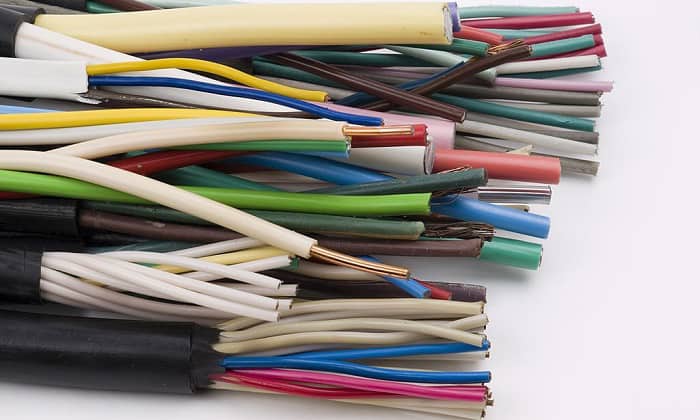Wiring an electrical diagram can be a challenging job. Now, you might be wondering what size wire for 30 amps 200 feet.
The size wire required for a 30-amp 200-foot connection generally depends on the circuit’s voltage. Oftentimes, the connection needs a 10-gauge wire for a 120-volt circuit and a 6-gauge wire for a 240-volt circuit.
Take note that you also need to consider other factors like the wire’s material. So continue reading to gain additional insight into wiring a 30-amp connection at 200 feet.
Table of Contents
What Size Wire Needed for 30 Amps 200 Feet?
Wiring for 30 amp breaker at 200 feet requires careful consideration of different elements to ensure the circuit runs properly. One factor to think about is the voltage drop.
Use the following formula to calculate the voltage drop:
\begin{equation}
\text{Voltage drop} = \frac{\text{Length of the circuit (ft)} \times \text{Current (amps)}}{100}
\end{equation}
Next, find the value of the power factor based on its material. You can look at these values in the tables in the next section.
For example, you’re trying to determine a wire size for a 30-amp 240-volt circuit for a 3-horsepower motor running at an 80% power factor. If the feeder length is 200 feet, the calculation for the voltage drop should look like this:
- 30 amps x 200 feet = 6,000 amps-feet
- 6,000 / 100 = 60
- Using 80% PF = 0.0187
- 60 x 0.0186 = 1.122 voltage drop
- (1.122 / 240) x 100 = 0.47% voltage drop
After figuring out the value needed for the connection, it should help you determine which 30-amp wire size you need for the circuit to run at 200 feet.
1. Type Of Wire (Aluminum Or Copper)
Looking at a wire size chart based on the material can help determine the correct gauge to use for the 200-foot circuit. Take note that you can typically find wires made from two materials: aluminum or copper.
Each material has properties that can handle circuits using different power factors. Consult the tables below to check the amount of load power a particular wire can handle based on its material and the load’s power factor:
Also, aluminum and copper wires have different properties that help secure the 30-amp service at 200 feet. These traits include:
- Tensile strength: Copper is the superior choice if you’re running the wire underground because of its higher durability than aluminum.
- Conductivity: Copper is a better choice than aluminum for being the better conductor of the two wiring materials.
- Thermal expansion: Aluminum expands more than copper when exposed to heat.
Despite copper being the better choice in many cases when compared to aluminum, the former can be quite expensive. Budget-conscious property owners may still want to use aluminum wires to reduce installation costs.
2. At Different Volts (120v, 240v,…)
Aside from the wire’s material, you should also consider its ampacity, particularly when looking at the circuit’s voltage reading. Ampacity is the maximum amount of current the wire may carry safely.
For example, a 30-amp circuit needs a wire with an ampacity of at least 30 amps. However, it’s often safer to use a wire gauge with a higher ampacity than needed to ensure the circuit runs smoothly.
With a 30-amp ampacity, the 10-gauge wire is ideal for a 120-volt circuit. But if you’re wiring a 240-volt circuit, a 6-gauge wire is often the better choice.
But it’s also important to mention a direct comparison of the circuit’s voltage and the wire size is often irrelevant, especially without looking at other factors. That means that you can use the same size wire if you’re running 30 amps 100 feet or 300 feet.
But the wattage can differ based on the circuit’s voltage reading. Here are some examples:
- 3,300W wattage for 30 amp 110v
- 6,600W wattage for 30 amp 220v
- 7,200W wattage for 30 amp 240v
You only need to ensure that the wire has a 37.5-amp ampacity for a 30-amp circuit. If so, the 8-gauge wire for 30 amps can be a universal choice for many connections.
How Far Can You Run a 10 Gauge Wire for 30 Amps?
The distance to run 10-gauge wire for 30 amps typically depends on the load. You also need to input the voltage drop to determine the appropriate distance for the 10-gauge wire.
For instance, if you don’t want a voltage drop of more than 5%, use the following formula to determine the maximum resistance for the connection:
\begin{equation}
\text{Resistance (}\Omega\text{)} = \frac{\text{Voltage (V)}}{\text{Current (A)}}
\end{equation}
or
\begin{equation}
\text{R (}\Omega\text{)} = \frac{\text{V (Volt)}}{\text{I (Amp)}}
\end{equation}
So if you’re running a 10-gauge wire for a 120v 30-amp circuit, the material’s length should be no more than 50 feet. Exceeding that distance may encourage additional voltage drops.
On the other hand, running a 150v 30-amp circuit with a 10-gauge wire will generally run well with a wire at 150 feet.
What Would Happen if I Use a Smaller Wire?
A wire that’s too small may cause the conductor to become significantly hot. If so, issues may arise, including overloads and short circuits. Plus, the connection becomes at risk of encountering higher voltage loss than expected.
How Do I Determine the Right Wire Gauge?
Aside from the factors previously mentioned, other factors to think about to find the correct wire gauge are:
- The wire’s thickness and length
- Flexibility (e.g., solid core, finely-stranded, or coarsely-stranded)
- Wire insulation
- Wire color
You can also consult a wire size chart like the one below:
Frequently Asked Questions
What Size Wire Do I Need To Run 30 Amps At 300 Feet?
Generally, you’ll need a 6-gauge wire to run a circuit or service at 30 amps 300 feet. However, if the continuous current falls under 24 amps, you need to use a wire with a higher ampacity like an 8-gauge wire.
What Size Wire For 15 Amps At 200 Feet?
A 14-gauge wire is ideal for a circuit running at 15 amps 200 feet. But a 12-gauge wire can also be a safe option.
What Size Wire For 20 Amp Service 100 Feet Away?
A 12-gauge wire is generally the ideal choice for a circuit that’s 20 amp 100 feet. Still, a 10-gauge wire can be a better option, particularly if the distance is close to or further than 100 feet away from the service panel.
What Size Wire Do I Need To Run 500 Feet?
Use the same size wire that you’re typically using for a 100-foot service to run a 500-foot circuit distance. Still, you need to consider the ampacity of the circuit as you may need to use a larger wire than intended for the connection.
Conclusion
By now, you should know what size wire for 30 amps 200 feet. Remember to think about different elements to ensure you’re making the right choice.
Some factors to ponder upon include the wire’s material and the circuit’s load or power factor. Determining these elements can help you use the correct wire and maintain the circuit’s efficient flow of power.
Fail or use the wrong size wire, and you might encounter problems with your property’s electrical setup.

I am Edwin Jones, in charge of designing content for Galvinpower. I aspire to use my experiences in marketing to create reliable and necessary information to help our readers. It has been fun to work with Andrew and apply his incredible knowledge to our content.








